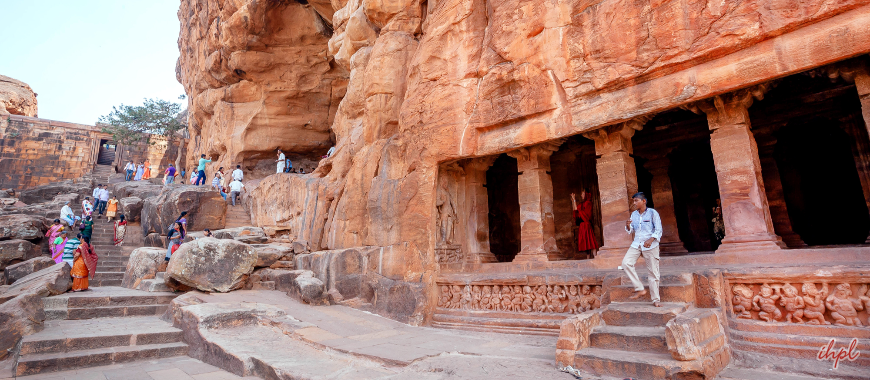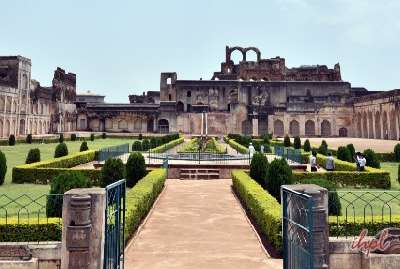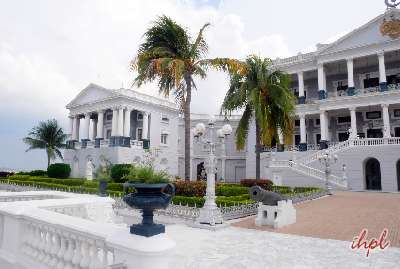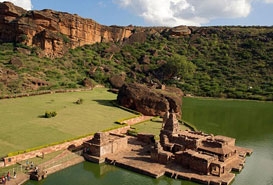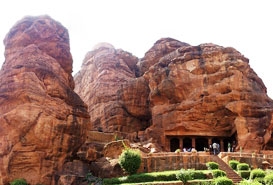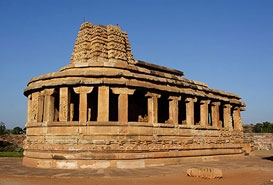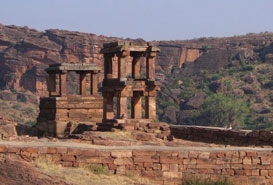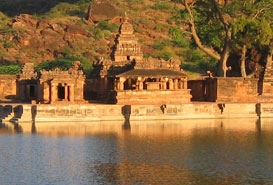Badami, the ancient capital of the Chalukyas, is famous for its rock-cut cave temples, serene Agastya Lake, and red sandstone cliffs. A haven for history buffs and architecture admirers. With 34 years of expertise, Indian Holiday brings you the best-customised tour packages and trusted local support, ensuring a journey as vibrant and diverse as Karnataka itself.
Still, wondering why Indian Holiday is your best choice? Read This: Why Choose a Travel Comp Over an Online Booking Agent? Is It Expensive To Book Through A Travel Company?
A stunning example of exquisite rock cut structure, especially the Badami-Chalukya architecture, the four cave temples of Badami are one of India’s outstanding traditional identities. Dated from the 6th century onwards, the caves inside the complex belong to different faiths and represent the religious harmony, characterizing the social identity of ancient India.
All the caves in Badami are carved out of the soft Badami sandstone, which lay about in the surroundings. Listed in the index of UNESCO World Heritage sites, the structures at Badami are one of the most fascinating tourist destinations in the country.
Check out Karnataka tour packages, Bangalore tour packages, Mangalore tour packages
There are four caves within the Badami structural complex which are Hindu, Jain as well as Buddhist structures.
Cave I: Dedicated to Lord Shiva, Cave I is the oldest of the four structures in Badami and was built around 6th Century BC. There is a wonderful image of Lord Nataraja in his 81 dance moves on the wall to the right of the porch in addition to a huge figure of Ardhnarishvara on the right of the porch. Besides there is also a large figure of Harihara, which is the image of half Shiva and half Vishnu on the wall opposite to the porch. The cave is also adorned with other beautiful reliefs and is accessed through a flight of 40 steps. Being preserved for nearly 1,400 years, the cave certainly draws a lot of attention from the visitors and travelers.
Cave II: Cave II is dedicated to Lord Vishnu and is reached by climbing 64 steps from Cave I. It is relatively simpler in design but still exhibits beautiful structures and relief work. The cave is said to have been constructed in the late 6th century AD. The largest structure in the cave shows Vishnu in His Trivikrama Form, while other designs display Krishna’s avatars (incarnations) and other legends from the Bhagvata Purana. The figure of Lord Varaha (one of the incarnations of Lord Vishnu) recuing the Earth from the depths of ocean is a famous structure of Cave II.
Check out Badami tour packages, Shravanabelagola tour packages, Hassan tour packages
Cave III: This largest and the most remarkable cave was constructed around 578-580 AD and contains an inscription by the Chalukya King Magalesa in Kannada which demonstrate the patronizing channels. The cave has beautiful brackets in the shape of yalis. The ceiling panels contains different structures like the image of Indra riding an elephant and Shiva on a bull etc. The cave is again dedicated to Lord Vishnu, whose impressive structure is shown sitting on a snake. The cave is reached by climbing 60 steps from Cave II is the most popular amongst travelers.
Cave IV: Cave IV is a Jain Cave and is smallest amongst the four. The right wall of the cave has an image of Suparshvanatha, who is the seventh Jain Tirthankar. He is shown being surrounded by the other 24 tirthankars. The cave is said to have been constructed between the 7th and 8th centuries. In addition to the images above, there is also a structure of Adinath, who is the first Jain Tirthankar.
Between Cave II and Cave III is located a natural cave which has an image of Padmapani, an incarnation of Buddha. A set of steps from the takes one to the hilltop South Fort. The area around this temple also has a number of temples worth watching for.
Check out Wildlife tour package Karnataka, Gokarna Tour Packages, Bandipur tour packages
Badami Tour Packages
Things To Do in Badami
Why Book With Us
35+
Years of Travel Experience
100+
Travel Experts To Assist You
03+
Million Satisfied Guests
Ministry
of Tourism Accredited
- 5/5 Rating:
- 4/5 Rating:

